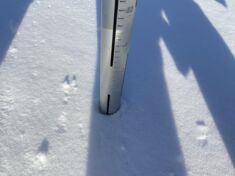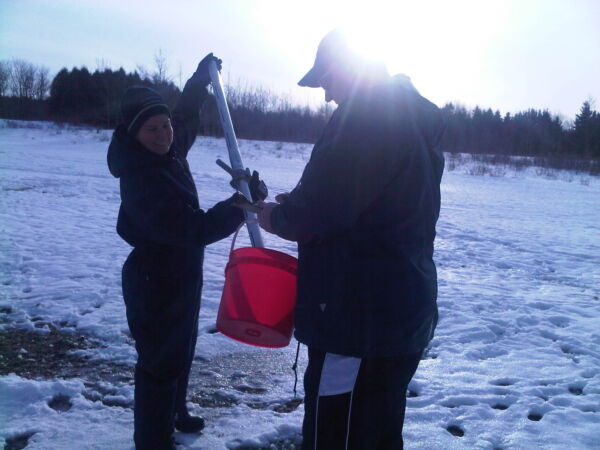How Much Water is in the Snowpack?
Since the 1950s, the Upper Thames River Conservation Authority (UTRCA) has monitored snow conditions through manual measurements across the watershed.
Between November and May, snow surveys are completed at the beginning and middle of each month. The surveys result in a collection of data related to the snowpack, including snow water equivalent, snow depth, and ground and snow crust conditions. The program currently monitors 13 sites distributed across the watershed.
Snow water equivalent is the depth of water that the snow pack contains. This estimates the amount of water on the ground and, when combined with depth, how close the snowpack is to releasing water as it melts. This information, combined with weather forecasts, is used in mathematical models to estimate the extent of flooding that the snow melt and/or rain may cause.
At each of the 13 sites currently being monitored, staff take 10 cores of snow using a calibrated snow tube/corer. Following a straight line, staff collect snow measurements about every 8 ft (10 steps), making sure to avoid trampled, non-representative sections.
A measurement is taken by pushing the corer down into the snow vertically until it touches the ground, and taking a depth reading from the surrounding snow against the graduations on the outside of the corer. When removing the corer, staff tilt it slightly sideways before removing it so that the snow core stays inside of the unit. They then dump the snow core into a bucket from the top end. Once all 10 samples have been collected, the bucket of snow is weighed.
Based on this information, UTRCA engineers calculate the snow water equivalent and density at each location. The data gathered at each snow course is then stored in a UTRCA database and a provincial government database.
The UTRCA examines this data for trends to compare any given year to what is normal, as well as to gauge watershed conditions, including whether the ground is frozen or saturated. It also helps track potential changes to snow pack due to climate change.
Contact: Jessica Penz, Water Resources Technician



